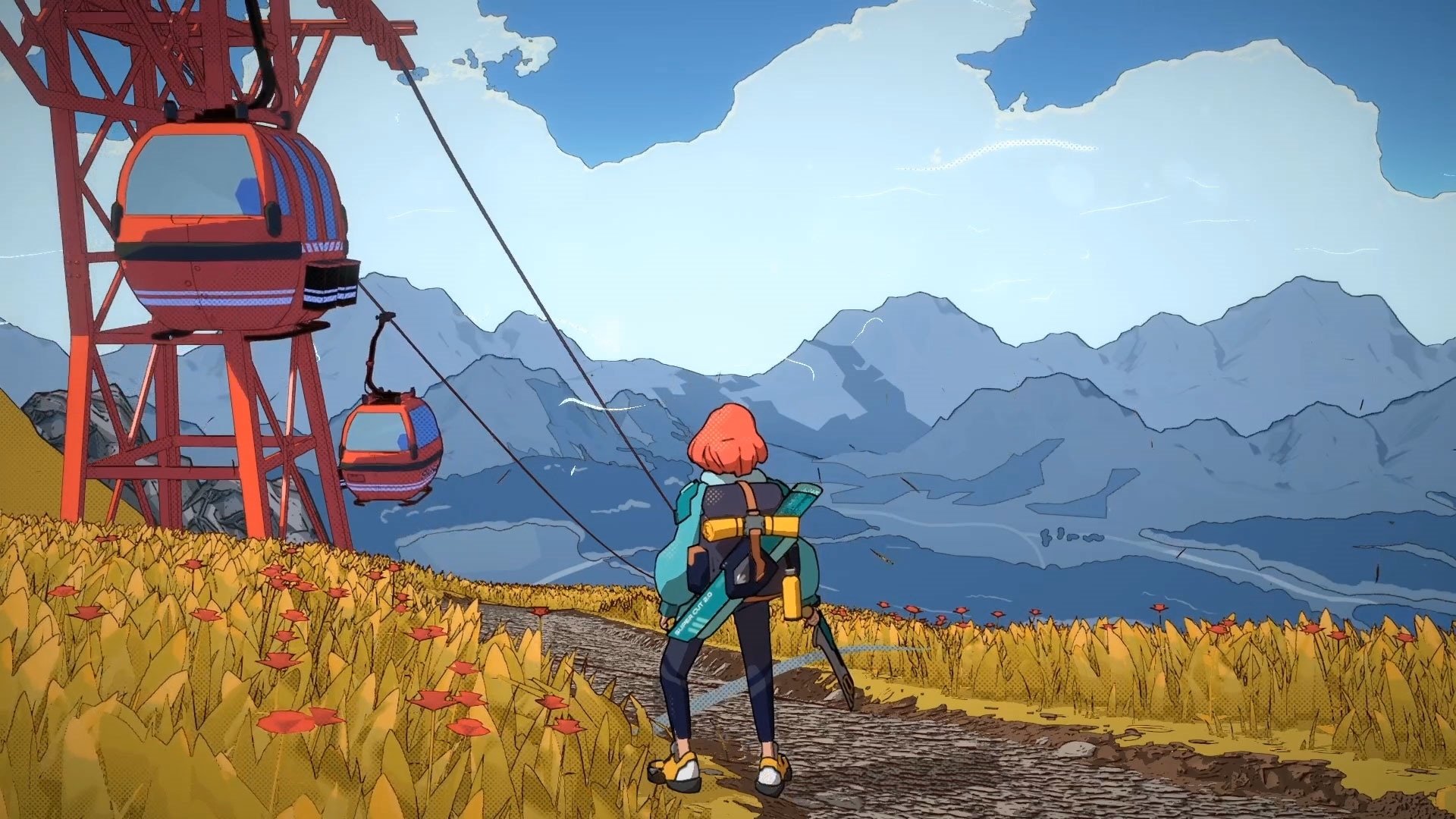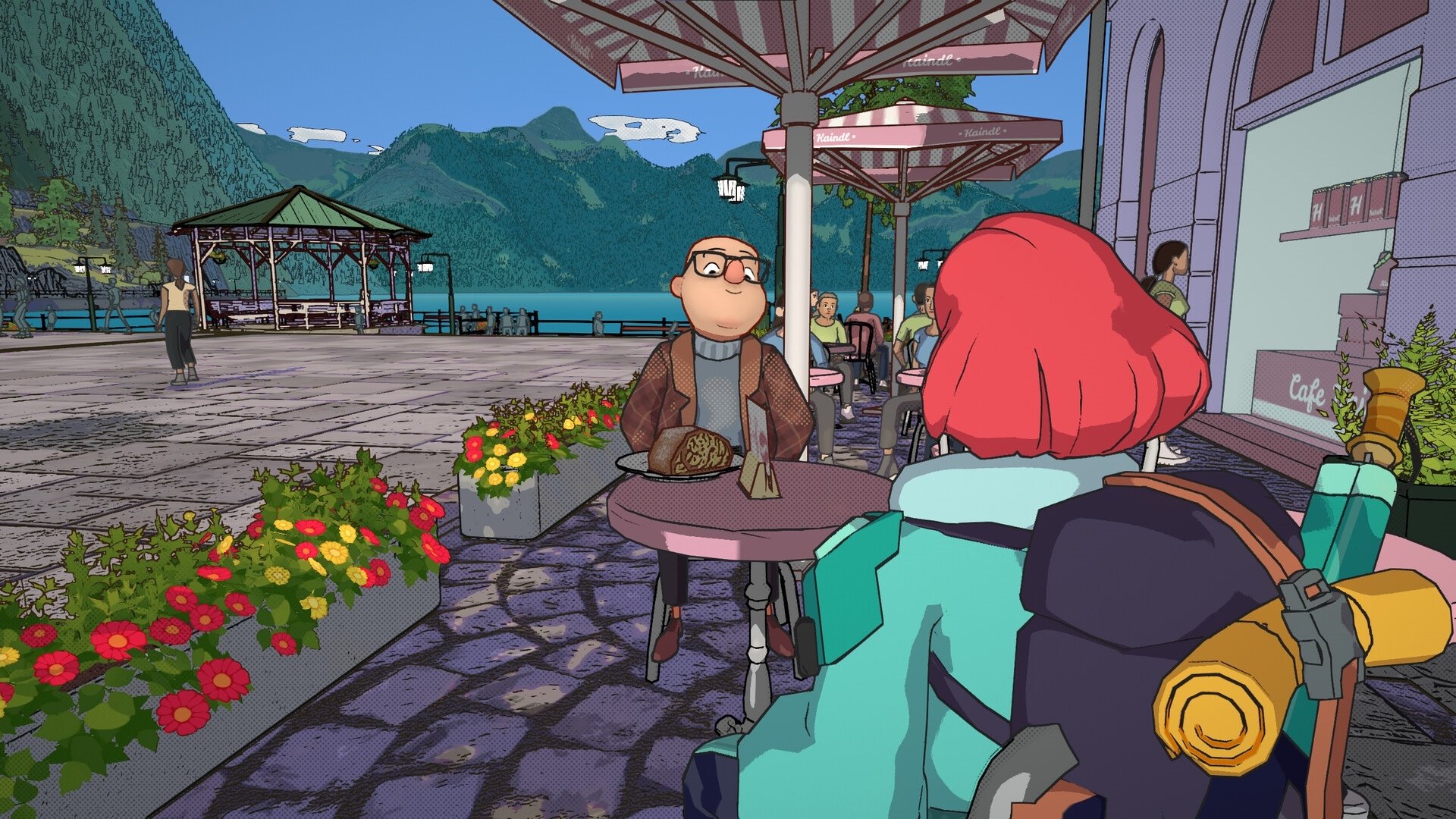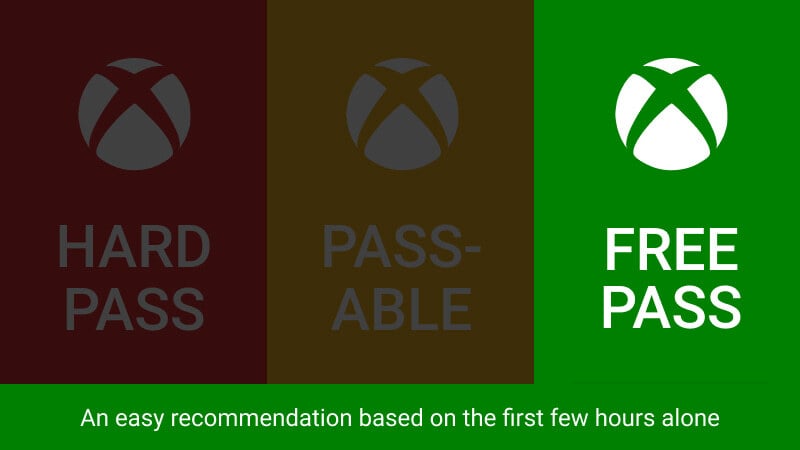At first, it seems like everyone is so happy about the sudden appearance of magic in an otherwise normal world, and that monster killing has become such a light-hearted tourist activity, advertised as something fun and joyful: take the kids for a fun family activity! It’s never too early to start training them! However, Dungeons of Hinterberg does a good job of showing how quickly Luisa readjusts this way of thinking after seeing a dungeon, and how not everyone in Hinterberg sees monster killing as something to be monetized, which raises uncomfortable questions about monster sentience and the ethics of advertising monster killing.
That last paragraph made things a bit heavy-handed, but the Dungeons of Hinterberg experience is actually quite enjoyable. Days are divided into segments: morning, afternoon, evening, and night. The pace of progression is very satisfying, at least in what I’ve played so far, with new features unlocking at a nice, fast pace and Luisa leveling up quickly, so that each day feels like you’re stronger than before.

After choosing the area you want to go to, you head there for the afternoon. Each area is different, with its own beautiful scenery and dungeons and spells (more on that later). You spend the afternoon exploring, relaxing, or tackling a dungeon, but there’s no rush. The game makes it very clear when time is going to advance, so you can finish everything you want to do before moving on to the next time slot, and you don’t have to keep an eye on the clock. It’s a great way to balance the amount of things to do, while still feeling like you’re supposed to be relaxing on your vacation.
In the evening, you choose who to spend your time with, whether it’s improving a relationship with a character or doing an activity like chatting with a group around a campfire, and you go shopping to stock up on what you need for the next day. There’s also a nighttime slot, but at the start of the game, Luisa just wants to go to bed. It’s understandable after a day of fighting magical creatures when you’ve spent the rest of your life dealing with normal, non-magical things. Speaking of which!

There are a wide variety of magical creatures to face in the dungeons, and a variety of ways to take them on. Luisa is armed with a sword and can dodge around opponents to attack them physically, but quickly learns spells with which to vary her approach. Each large area has different spells that only work in that area, which you also use to solve puzzles and progress through the dungeons. On top of that, you can start adding charms and more powerful attacks as well as potions and better equipment. Monster parts and other resources are everywhere, as are chests with better rewards, and it’s worth checking every nook and cranny to make sure you have them. Once you get too close to a group of monsters, you’re locked in a fight to the death, so it’s important to have a good idea of whether you’re ready to take them on. It’s too early to tell if the enemies and combat will become repetitive, but so far the ability to keep switching between spells and powerful attacks keeps things enjoyable.
Improving your relationships with other slayers and the townsfolk of Hinterberg also comes with its own rewards. The more you know them, the more they’re able to help you, whether it’s boosting your health, helping you unlock chests, or pointing you to hidden dungeons. There’s a range of interesting characters, and I liked the different interactions available (although some people won’t talk to you unless you have the kind of stats they want). It was also interesting to continue learning more about how people really feel about magic being turned into a monetized tourist attraction: throwing newcomers straight into danger, for example, or how local teenagers feel about not being able to use technology because of the town’s magic. Splitting each day into these slots works well to keep each playthrough fresh and give Dungeons of Hinterberg’s strengths time to shine. It also allows you to put the controller down for a while, if you’re looking for a natural stopping point for the day.

The art style is incredibly eye-catching. To be honest, I wasn’t sure about it until I started the game, but while some elements of the world can feel a little messy at times, the overall look is actually very beautiful. It’s an interesting choice for a game that puts so much emphasis on the beauty of its alpine landscape, and it takes a little getting used to, but the brightly colored trees and lakes, as well as the movement of the wind in the meadows, all come together well to create a beautiful backdrop. Visual effects like the dotted shadow after you swing your sword are also very nice. It’s also a plus that Dungeons of Hinterberg feels very polished so far. The dialogue and sound effects are very smooth, and aside from the occasional awkwardness with depth perception, the game is very satisfying and clean.
The combination of the “relax, you’re on vacation!” vibe with the idea that there’s always something to do and plenty of dungeons to explore is actually a very successful combination. If you want to focus on relaxing and exploring, you can do that, and you can also engage in combat every day. The game makes it clear that you can play it your way. I like the nods to the setting and the idea of vacation (the loading screens are postcards, for example, and the cows were often obstacles blocking paths I wasn’t supposed to reach yet), and I really like the fact that even though the days are divided into segments, you can spend as much time as you want in the afternoons exploring freely.
Summary
I’m really enjoying Dungeons of Hinterberg so far. In some ways, it does exactly what it promises, but it’s also surprisingly different from what I expected. I find myself wanting to go back to it every time I put the controller down, but I also like that splitting the day into chunks allows for a natural end. I’ve been playing on Normal difficulty and have enjoyed the fights so far, but you can switch between difficulties throughout the game. I can’t comment on achievements yet as they weren’t live at the time of writing, but as for the game itself, I’m looking forward to playing more of it.
*Heidi spent several hours exploring Hinterberg, fighting monsters and learning spells. A review copy was provided by the publisher and was played on an Xbox Series X.
